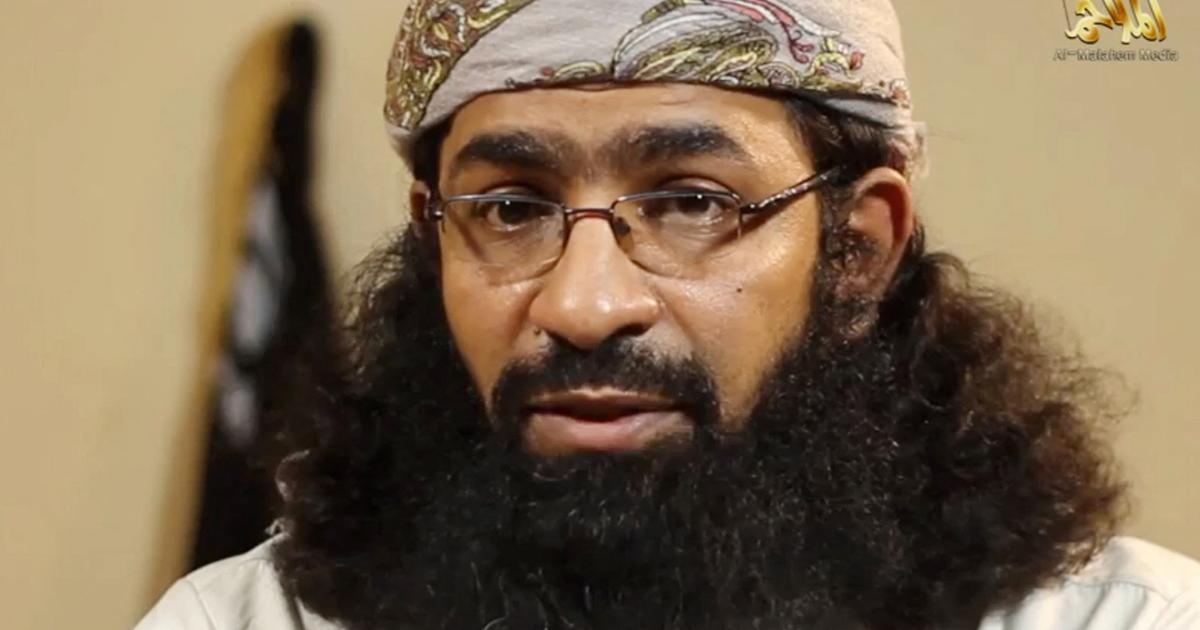One of New York's two Twin Towers before its collapse in the attacks of 9/11 2001. CONTACT / ZUMA PRESS / Europa Press
The death of 2,997 people on September 11, 2001 in the United States enthroned Al Qaeda at the forefront of global armed jihad. It was his masterstroke, but also a conviction. He made the group a fugitive from US justice under threat of capital punishment. And that weakened his project, as shown by the correspondence that the Navy Seals that killed Osama Bin Laden in May 2011 seized at his home in Abbottabad, Pakistan. One of the letters from members of the terrorist network recounted the abduction in Yemen of several foreigners in 2009. “About a year ago,” says the letter, “we kidnapped nine Christians, including Germans, a British and a Korean. The brothers killed three women. Then, a woman and her husband resisted and were killed along with the British man (...).Things did not go well for us and we had no experience in kidnappings (...). We also did not have a good hiding place and that prevented us from exploiting these kidnappings as we should. The agreement (...) was that you would take care of the negotiations, but the lack of communications prevented this from happening ”.
This letter rescued in Abbottabad, one of many, is written by the Libyan Atiyad Abd al Rahman, a veteran jihadist close to Bin Laden, and is addressed to "Basir", referring to Abu Basir or Nasser al Wuhayshi, Yemeni leader of the branch of Al Qaeda in the Arabian Peninsula (AQAP), one of the most active in these two decades.
Sender and sender are already dead, both shot down by US drones.
More information
Joe Biden orders the declassification of secret documents from the 9/11 investigation
Video |
Timeline in images of the 9/11 attacks
Washington already had bin Laden and his henchmen in its sights before 9/11. The Saudi carried out from Afghanistan and with the placet of the Taliban a campaign to attract radical activists of the armed jihad; it had urged, in the late 1990s, the death of Americans. Following the attacks on the US embassies in Tanzania and Kenya in August 1998, US planes, under the orders of Bill Clinton, attacked training camps for the terrorist network in Sudan and southern Afghanistan. But 9/11 definitely launched the war on terror coined by George W. Bush and the network went on the run. Many of its leaders crossed the borders to avoid death. The US offensive hit the top leadership - it still does today - but it did not affect the strength of its brand,as demonstrated by the brutal attacks of March 11, 2004 in Madrid and July 7, 2005 in London.
Again among the Abbottabad documentation there is a letter from the Libyan Al Rahman to Bin Laden himself. In the text, dated July 2010, the sender prays for the release of three commanders of the terrorist network: Abu Muhammad al Zayyat, Abu al Khayr and Saif al Adel. At least the last two, two veteran Egyptian jihadists, were imprisoned in Iran after crossing west from Afghanistan in search of refuge. As revealed in September 2015 by
The New York Times,
the inmates in Tehran custody were released in exchange for the release of an Iranian diplomat held precisely by AQAP. Today, Al Adel is appointed to lead the terrorist network in the medium term. Al Khayr was killed by the Americans in Syria.
The jihadist journey of Saif al Adel, born between 1960 and 1963, for whose whereabouts Washington offers a reward of 10 million dollars, serves to trace the path of Al Qaeda.
The literature on his life, although not uniform, agrees that he is a former Egyptian military man, a veteran of the holy war against the Soviets, who was part of the Islamic Jihad and later became a strategist and leader on the battlefield faithful to Bin Laden. .
The attacks of the summer of 1998 in Africa are attributed to him;
including the training of Somali radicals who shot down a Black Hawk helicopter in 1993.
Join EL PAÍS now to follow all the news and read without limits
Subscribe here
Following Bin Laden's death in 2011 at the hands of US special forces, Al Adel took over the leadership on an interim basis. He dealt with confirming the loyalty of top al Qaeda leaders, many of them at the forefront of regional ramifications. Later, the leadership would appoint the
Saudi
number two
, the Egyptian Ayman al Zawahiri, 70, as the new leader of the group. It is estimated that either he has died, although the media apparatus of Al Qaeda has not reported it, or he is very ill.
Would the group still be willing to commit another 9/11? Danish Tore Hamming, a scholar at King's College's International Center for the Study of Radicalization, thinks not. “Al Qaeda,” he says in an email exchange, “does not currently prioritize attacks like 9/11. Over the past 10 years, the group has shown little operational focus on carrying out larger terrorist attacks in the West, but has focused primarily on its local conflicts. Through these conflicts, the group has been able to attack the West, for example, targeting French troops in the Sahel ”. Indeed, that is the great success of Bin Laden's work away from that massacre in New York: the confirmation of Al Qaeda's tentacles beyond Afghanistan.
The Sahel is one of the targets most crushed by the terrorist network through the coalition of radical Islamist groups under the seal of JNIM (Group for the support of Islam and Muslims) and the leadership of the Tuareg Iyad Ag Ghaly - public enemy number one of France—, and through a brutal campaign of attacks on the triple border between Mali, Burkina Faso and Niger. Further south, in Nigeria, a part of Boko Haram, the armed sect that shook the world with the abduction of minors in 2014, still maintains links with Al Qaeda; as surely does the first African franchise established by bin Laden, Al Shabab, in Somalia, with recruits from all over the eastern region and the ability to attack and occupy territory.
As a report prepared for the United Nations Security Council pointed out in July, al Qaeda is still operational in at least 15 of Afghanistan's 34 provinces. The text also collected intelligence information on how the Al Qaeda group in the Indian Subcontinent (AQIS) operated "under Taliban protection" from Kandahar, Helmand and Nimruz, the three provinces that border Pakistan. And, finally, there is Syria, the place of origin of many members of the network in the eighties and nineties. The province of Idlib, the last stronghold outside the regime's reach, is controlled by Hayat Tahrir al Sham, heirs of an offshoot of Al Qaeda in Mesopotamia, in addition to including Hurras al Din, openly affiliated with the terrorist network.
The legacy of Bin Laden and the 2001 attacks goes beyond the death of their leaders.
The emergence of the Islamic State (ISIS) is perhaps one of the greatest challenges to its throne in the realm of global armed jihad.
“While Al Qaeda may have lost some support after bin Laden's death,” continues Tore Hamming, “I don't think this should be attributed to the change in leadership, but rather to the circumstances of Al Qaeda. Zawahiri.
The defiance of its renegade affiliate, turned ISIS, left Al Qaeda hurt, but I doubt it would have been much different with Bin Laden alive. "
Follow all the international information on
and
, or in
our weekly newsletter
.














